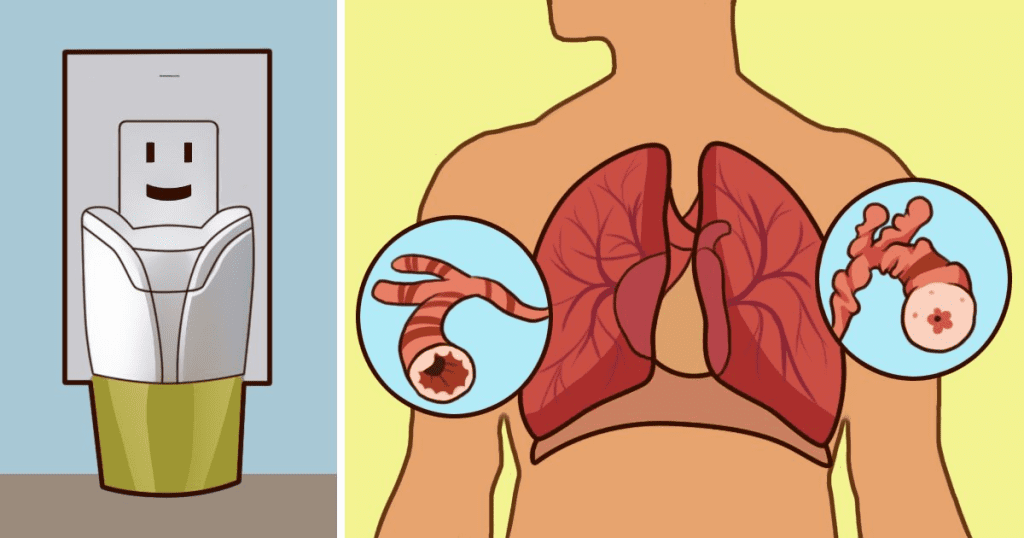Asthma can be a challenging condition to manage, especially with its tendency to flare up unexpectedly. For the estimated 300 million people globally who live with asthma, knowing and avoiding the triggers that can lead to an attack is essential. By understanding what causes these flare-ups, you can take proactive steps to minimize exposure and breathe easier. In this guide, we’ll explore some of the most common asthma triggers as well as a few lesser-known ones, helping you navigate daily life with fewer disruptions.

Understanding Asthma and Its Triggers
Asthma is a chronic respiratory condition that narrows the airways, making breathing difficult. An asthma attack occurs when something triggers the airways to become inflamed and swollen, further restricting airflow. These triggers vary widely from person to person, and they can range from environmental allergens to physical and emotional stressors. By identifying and avoiding your personal triggers, you can reduce the frequency and severity of asthma attacks.
Top Common Asthma Triggers to Avoid
While everyone’s asthma triggers are unique, some are more widespread. Let’s take a look at the most common asthma triggers and simple tips for minimizing your exposure to them.
1. Pet Dander
Pets are lovable companions, but for some asthma sufferers, they can also be a source of distress. Animal dander (tiny flakes of skin), saliva, and even urine can trigger asthma symptoms, particularly if you have a pet allergy.
- How to Reduce Exposure: If parting with your pet is not an option, you can limit exposure by keeping them out of bedrooms, vacuuming frequently with a HEPA filter vacuum, and bathing them regularly to reduce dander.
2. Dust Mites
Dust mites are among the most common triggers for allergic asthma. These tiny pests thrive in bedding, upholstery, and carpets, where they feed on dead skin cells. They can trigger sneezing, coughing, and wheezing, making them a significant concern for asthma sufferers.
- How to Reduce Exposure: To minimize dust mites, wash your bedding weekly in hot water, use allergen-resistant covers on pillows and mattresses, and invest in a HEPA air purifier. Avoid carpeting if possible, as dust mites love soft surfaces.
3. Cold Air
Cold weather can be tough on the respiratory system, even for those without asthma. Cold air can irritate the airways, causing them to tighten and make breathing more difficult. This is especially challenging during the winter months or in places with consistently cold climates.
- How to Reduce Exposure: If you have to be outside in the cold, wear a scarf over your nose and mouth to warm up the air before it enters your lungs. Breathing through your nose instead of your mouth can also help warm the air.
4. Indoor Air Fresheners and Cleaning Products
While it may be nice to keep your home smelling fresh, many air fresheners and cleaning products contain volatile organic compounds (VOCs) and chemicals that can irritate the lungs. These can be particularly harmful to those with asthma.
- How to Reduce Exposure: Opt for natural cleaning products and avoid plug-in air fresheners. If you want to scent your home, try boiling cinnamon sticks or using essential oils in a diffuser.
Less-Known Asthma Triggers You Should Be Aware Of
In addition to the common triggers, several surprising factors can lead to asthma flare-ups. Understanding these less obvious triggers can provide you with an added layer of protection.
1. Thunderstorms

While thunderstorms might be refreshing, they can also trigger asthma attacks. During a thunderstorm, rain and wind can break pollen particles into smaller pieces, which then disperse into the air and are more easily inhaled.
- How to Reduce Exposure: If you know a storm is coming, stay indoors and keep windows closed. A HEPA air purifier can help filter out any pollen or mold spores that may enter your home.
2. Intense Emotions (Laughter and Crying)
Asthma doesn’t just have physical triggers. Intense emotions, such as heavy laughter or crying, can lead to rapid breathing or even hyperventilation. This can irritate the airways, triggering an asthma attack.
- How to Reduce Exposure: While you can’t always control your emotions, practicing deep, slow breathing during moments of laughter or sadness may help. If you find yourself triggered by emotions frequently, mindfulness and breathing exercises can be beneficial.
3. Stress and Anxiety
Stress doesn’t just affect your mental health—it can have serious physical implications, too. When you’re stressed, your body releases hormones that can tighten the airways, increasing the likelihood of an asthma attack.
- How to Reduce Exposure: Regular relaxation techniques, like meditation, yoga, and deep breathing exercises, can help you manage stress. Talking to a therapist about stress management techniques can also be very effective.
4. Food Additives and Preservatives

Some food additives and preservatives, such as sulfites, MSG, and nitrates, have been linked to asthma symptoms. These compounds are often found in processed foods, pre-packaged meals, and even some beverages.
- How to Reduce Exposure: Read labels carefully, and aim for a diet rich in whole foods like fresh fruits, vegetables, lean meats, and whole grains. This approach reduces your intake of additives and helps keep your diet free from potentially triggering ingredients.
Taking Control: How to Track Your Triggers and Manage Symptoms
The key to managing asthma lies in identifying and understanding your specific triggers. Keeping a detailed journal of your symptoms, the environment, and what you were exposed to during an asthma attack can be incredibly insightful. Here are a few practical tips:
- Create an Asthma Journal: Note the date, time, and severity of each asthma episode, as well as possible triggers. This could include environmental conditions, food consumed, or recent emotional stress.
- Use a Tracking App: If a journal isn’t your style, consider using a mobile app to track your symptoms. Many apps allow you to monitor your asthma in real-time and can even send reminders for medication or inhaler use.
- Consult with an Allergist: Sometimes, the best way to identify asthma triggers is with professional help. Allergy testing can identify sensitivities you might not have known about, allowing you to take additional steps to avoid them.

Conclusion: Staying One Step Ahead of Asthma Triggers
Asthma is a manageable condition, but it requires vigilance and an understanding of your unique triggers. By staying informed and taking proactive measures, you can minimize the risk of an asthma attack and improve your quality of life. Whether it’s avoiding allergens, reducing stress, or controlling your environment, every small effort counts. Take charge of your asthma today by identifying and steering clear of these common and lesser-known triggers, and enjoy each breath with confidence.


